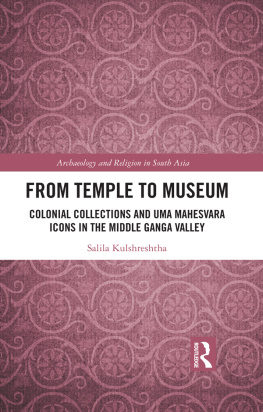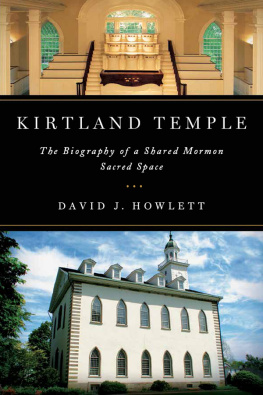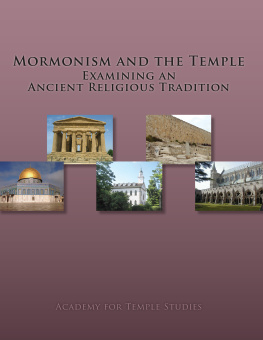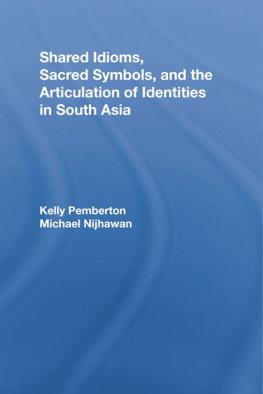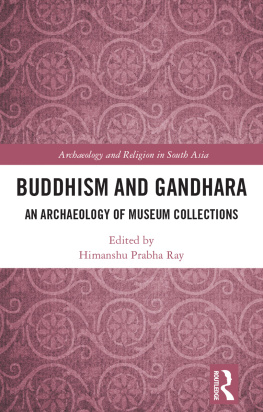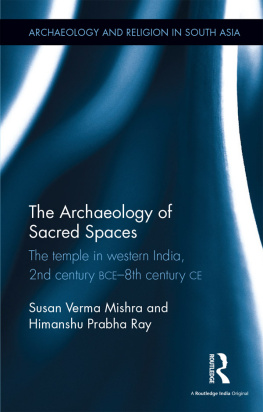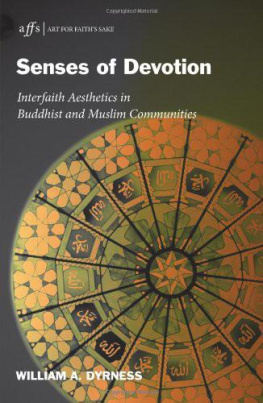First published 2018
by Routledge
2 Park Square, Milton Park, Abingdon, Oxon OX14 4RN
and by Routledge
711 Third Avenue, New York, NY 10017
Routledge is an imprint of the Taylor & Francis Group, an informa business
2018 Salila Kulshreshtha
The right of Salila Kulshreshtha to be identified as author of this work has been asserted by her in accordance with sections 77 and 78 of the Copyright, Designs and Patents Act 1988.
All rights reserved. No part of this book may be reprinted or reproduced or utilised in any form or by any electronic, mechanical, or other means, now known or hereafter invented, including photocopying and recording, or in any information storage or retrieval system, without permission in writing from the publishers.
Trademark notice: Product or corporate names may be trademarks or registered trademarks, and are used only for identification and explanation without intent to infringe.
British Library Cataloguing-in-Publication Data
A catalogue record for this book is available from the British Library
Library of Congress Cataloging-in-Publication Data
A catalog record for this book has been requested
ISBN: 978-1-138-20249-8 (hbk)
ISBN: 978-1-315-12121-5 (ebk)
Typeset in Sabon
by Apex CoVantage, LLC

This journey from a research synopsis to a monograph has taken almost ten years with two brief interludes. During this process I have lived in three continents and used several libraries and institutional facilities that I wish to thank.
The monograph is an outcome of my doctoral thesis submitted to the Jawaharlal Nehru University (JNU), New Delhi. I am extremely grateful to the faculty and staff of the Centre for Historical Studies (CHS), JNU for providing me the assistance and support as a doctoral student and teaching me the historians craft to think, to research, to argue and to write. The Central Library at JNU and the CHS Library provided me with a constant supply of books and journals and also a conducive atmosphere to work in. I am indebted to Professor Heeraman Tiwari and to my co-supervisor Professor R Mahalakshmi who provided crucial inputs to my thesis. A special note of acknowledgement to Dharmendra Sir who helped me navigate through the many administrative requirements of the university through my years as a MA, MPhil and PhD student. I would also like to thank the libraries and institutions whose facilities I have used including the American Institute of Indian Studies, Gurgaon; the National Museum Library, New Delhi; the Library of the Archaeological Survey of India, New Delhi; the Central Secretariat Library and the Indira Gandhi National Centre of Arts, New Delhi.
I started working on my project while I was teaching at the Old Dominion University, Norfolk, Virginia in 2006. I spent many winter afternoons in the university library and I am grateful to the staff and inter-library loan facility for helping me work on a topic totally unfamiliar to them. I still remember a book on the composite forms of Shiva which was sourced all the way from the University of Hawaii! My memories of Virginia would not be the same without the Val and Clayton Drees. Clay provided me with my first teaching job at Virginia Wesleyan College, Virginia Beach, and has been a mentor ever since. During the years I lived and worked in Mumbai, the galleries of the Chhatrapati Shivaji Maharaj Vastu Sangrahalaya and its library became a favourite haunt and provided the necessary backdrop to the section on colonial museums. My experience as the Assistant Keeper for the Dr Bhau Daji Lad Mumbai City Museum gave me first-hand exposure to handling colonial collections, heritage issues and the creation of colonial identities. Dr Devangana Desai with whom I frequently interacted in Mumbai guided me with her insights on sacred icons and their placement on temple walls.
In the summer of 2011 I went on my field trip to various sites of Bihar and I would like to thank those who made my study tour a success. Dr Bijoy Chaudhary at the KP Jayaswal Research Institute, Patna, shared his vast knowledge of and years of experience in mapping and documenting the archaeological sites of Bihar; to him I am very grateful. Over my years of association with him I have learned that the realities at site level are much different from the published reports. I am also thankful to the staff of Patna Museum and the then Curator Dr Umesh Chandra Dwivedi for helping me explore the museum and access the original museum registers and the reserve collection.
I would also like to thank the staff of Bihar Puravid Parishad and Bihar State Archives for allowing me to use their resources. I express my gratitude to the Archaeological Museum at Nalanda, Naradah Sangrahalaya, Nawadah, Gaya and Bodh Gaya Museums where I visited the galleries and also looked at the museum registers and reserve collections. Having spent a considerable amount of my time in museums in the last decade and the many conversations I have had with the staff has helped me put together a picture of museum practices from the past and in the present, and how these are crucial spaces which shape the heritage of a region. I am deeply indebted to the Mahant at Bodh Gaya Matha who allowed me to view and photograph the collection of sculptures in the Mahants Compound which is usually not open to public viewing and adds a totally different facet to the history of the site. While at the Matha I had the opportunity to meet Shri Giri the Sanchalak or the Administrator of the Matha who has resided there for more than seventy years and shared with me an insiders perspective on the history of the Matha and the changing landscape of Bodh Gaya.
While working on my manuscript I spent two years living in Netherlands where I used the library facilities and the photo archives at the University of Leiden and the collection of eastern Indian sculptures at the National Museum of Ethnology, Leiden and I am grateful to these institutions for allowing me to use their facilities. The historic city scape of Leiden, the ambiance of the university town and the academic initiatives of the International Institute of Asian Studies, Leiden provided an intellectual community for me to work in.
The photographs that I have published in this monograph come from many sources, some of these are my own, clicked during my field trips. The photo of the Mahants Collection has been given to me with permission to publish by Mr Vikas Vaibhav and I am thankful to him. Mr Vikas Vaibhav is a bureaucrat by profession but his passion for the history and heritage of Bihar is apparent in the remarkable blog that he writes http://silentpagesindia.blogspot.ae/. I would also like to thank the Centre for Art and Archaeology (CA&A) of the American Institute of Indian Studies, Gurgaon for providing me with digital copies of their photographs. A special note of thanks to Mr Shankar Suman at the Patna Museum for helping me publish photographs of sculptures from the Patna Museum. The image of the Buddha as Teliya Baba from Nalanda was given to me by Sonali Dhingra, PhD Candidate, Harvard University, and I wish to thank her for the same. I am grateful to Aakash Chakrabarty and his team at Routledge for teaching me the logistics of publishing.
I am deeply indebted to Professor Himanshu Prabha Ray who has gone beyond being my teacher, supervisor and mentor to look after my personal well-being. I have known Professor Ray for almost twenty years and all through this time she has guided me into the academic world with utmost patience, encouraged me to put in my best effort and has given me the space to work in my individual style. My research and this monograph would not have been the same without her expertise, her critical insights and her approach to religious archaeology. My relationship with her is most cherished!

